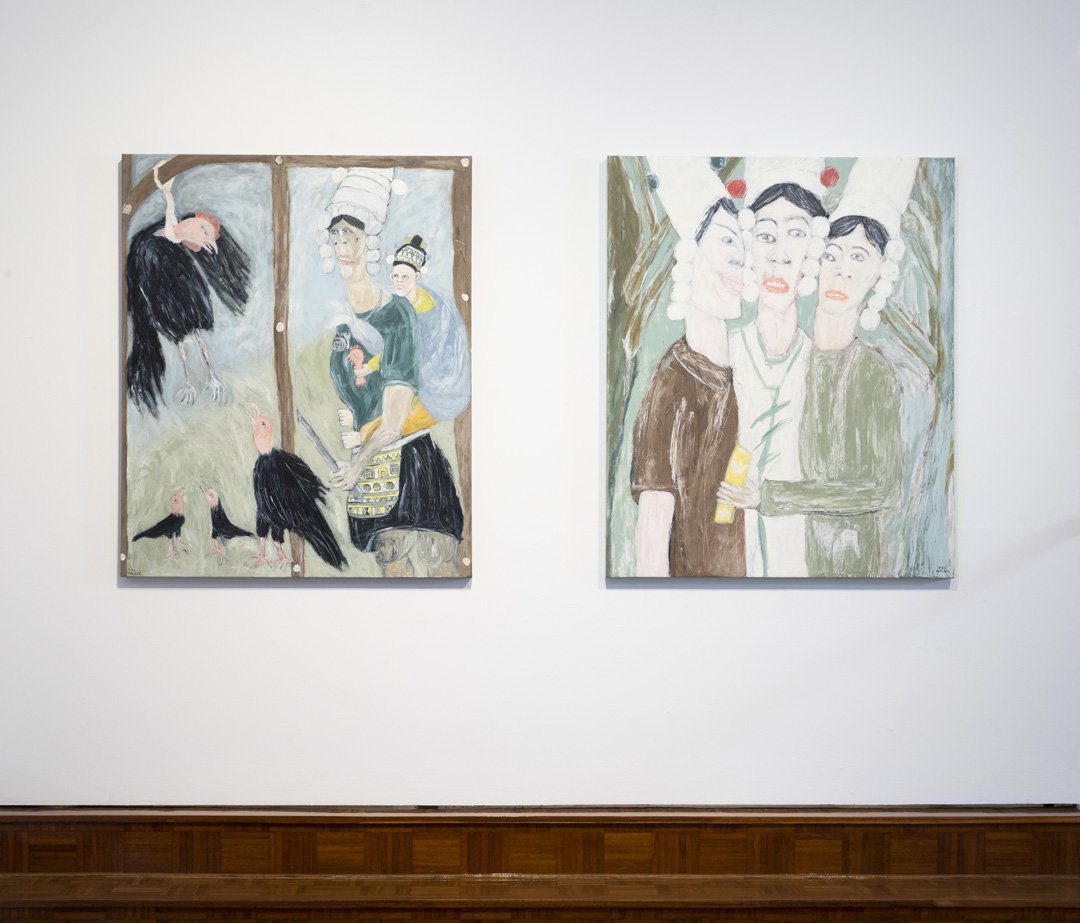Arresting and nuanced: ‘Other Possible Worlds: Contemporary Art from Thailand’
/A black-feathered rooster hangs by its pink neck, its distressed gaze reciprocated by the family of chickens looking up at it. Next to them, a woman brandishes a knife, while the baby strapped to her back grasps the head of an already decapitated bird like a toy rattle. The vertically divided composition brings together primal need and individual vulnerability, executed in layered expressive brushwork that imparts a vibrational intensity into the painting.
This is Busui Ajaw’s Panatipata Weramani (Do not kill) (2022), part of an arresting series of paintings representing the Five Precepts in Buddhism: no killing, no stealing, no sexual misconduct, no false speech and no intoxicants. Ajaw, a member of the nomadic Akha ethnic group from the highlands of Southeast Asia, fled as a child to Thailand with her family to escape violence in her home village in Myanmar. The self-taught artist’s works are part of ‘Other Possible Worlds: Contemporary Art from Thailand’, an exhibition taking place jointly across two Sydney venues: 16albermarle Project Space and Delmar Gallery. Curated by Haisang Javanalikhikara of Chulalongkorn University, Bangkok, and 16albermarle’s John Cruthers, the exhibition includes 12 artists born between the 1960s and the 1990s, representing early- and mid-career practices across a breadth of media and conceptual preoccupations.
Javanalikhikara and Cruthers have made an astute and varied selection which explores universally relatable themes while introducing Sydney audiences to some social and political nuances of their Southeast Asian neighbour. Som Supaparinya’s Paradise of the blind (2016/22) speaks to issues of censorship via an installation of bullet casings, shredded paper and books banned in Thailand and other parts of the Asia-Pacific; while Tada Hengsapkul’s photographic work They Said They Didn’t Use Live Rounds (2014) documents evidence of a violent 2010 crackdown in Bangkok which was denied by authorities.
Impressive material investigations are another key aspect of the exhibition, from the textured and intricate paper-cut relief sculptures of Kusofiyah Nibuesa, to the mind-bending embroideries of (Mariem) Thidarat Chantachua, to Imhathai Suwatthanasilp’s sculptures made from human hair (which gallery-goers might remember from the recent 23rd Biennale of Sydney).
16albermarle’s focus is the introduction of current art from Southeast Asia to Australian audiences, and past projects have focused on Indonesia and Myanmar, in collaboration with curators and art spaces from those countries. ‘Other Possible Worlds’ continues this ambition, expanding its footprint to a second venue in the form of Delmar Gallery at Trinity Grammar School, and emphasising the educational role that such exhibitions can play for audiences of all kinds.
‘Other Possible Worlds’ is a dynamic, affective and nuanced snapshot of contemporary life from the perspectives of these Thai artists.
Chloé Wolifson, Sydney
Curated by Haisang Javanalikhikara and John Cruthers, ‘Other Possible Worlds: Contemporary Art from Thailand’ is on display at 16albermarle Project Space and Delmar Gallery, both in Sydney, until 31 July.






















